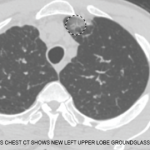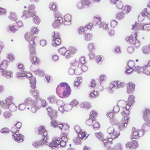At six months, there was no difference between the two groups in terms of overall survival or renal survival. Among the patients who had received the intensified therapy, 93% entered complete remission, and 60% of the patients who were dialysis dependent at study onset were able to be weaned from dialysis.
This approach is similar to the Rituxilup regimen, which successfully used rituximab, mycophenolate mofetil and methylprednisolone pulses to treat lupus nephritis without oral glucocorticoids.8 The current proof-of-concept study paves the way for CD-19 CAR-T cell therapy, which also promises deep depletion of the B cell compartment. With both approaches, the durability of response remains unclear.
6. Risk of Major Adverse Cardiovascular Events
Abstract 2386: Idoate et al.9
Patients with ANCA-associated vasculitis have an increased risk of major adverse cardiac events, which include non-fatal stroke, non-fatal myocardial infarction and cardiac death. This retrospective study explores whether this increased risk differs according to ANCA status.
This study included 166 patients who had ANCA directed against proteinase-3 (PR3-ANCA) and 236 with ANCA directed against myeloperoxidase (MPO-ANCA). After a mean follow-up of 7.51 years, patients in this study had 15 myocardial infarctions and 12 strokes.
Ten years after diagnosis, the probability of MACE-free survival was lower among patients with MPO-ANCA (83.4% vs. 68.8%).
Patients with MPO-ANCA had a higher incidence of both myocardial infarction and stroke, both of which occurred earlier in the disease course when compared with patients with PR3-ANCA. The incidence rate of myocardial infarction was 6.16 per 1,000 patient-years in the MPO ANCA group and 4.09 per 1,000 patient-years in the PR3-ANCA group. The incidence rate of stroke was 6.13 per 1,000 patient-years in the MPO-ANCA group and 2.72 per 1,000 patient years in the PR3-ANCA group. The association between MPO-ANCA and stroke was statistically significant (hazard ratio 3.05; 95% CI: 0.88–10.6), but the association between MPO-ANCA and myocardial infarction was not.
The increased risk of major adverse cardiac events observed among patients with ANCA-associated vasculitis is often attributed to the high doses of glucocorticoids used for remission induction and maintenance. Given that patients with MPO-ANCA and PR3-ANCA are treated with similar regimens, it is difficult to see how differences in treatment strategies could account for the higher incidence of major adverse cardiac events seen in this study. The results of this study imply that patients with MPO-ANCA in particular may benefit from aggressive risk factor modification for cardiovascular disease.



